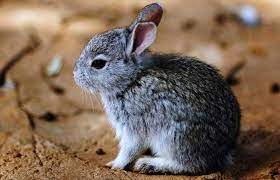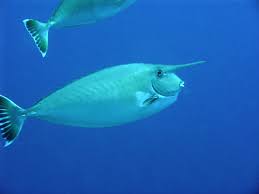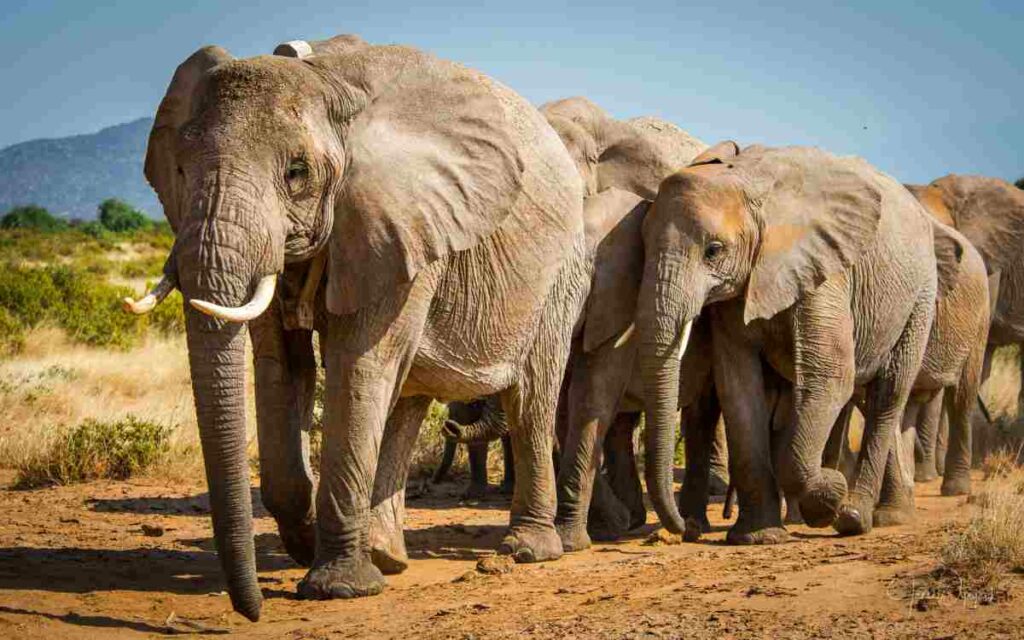Throughout human history, animals have held a profound symbolic significance in various cultures, representing a myriad of attributes from strength to wisdom. One of the most enduring and universal themes associated with animals is fertility—a symbol of life, growth, and abundance. Across the globe, certain animals have been revered and mythologized as embodiments of fertility, connecting deeply with the natural cycles of birth, rebirth, and the flourishing of life.
Table of Contents
From the regal rabbit to the nurturing elephant, and the mystical frog to the timeless phoenix, animals have woven themselves into our narratives of fertility, often embodying the magic of creation and the promise of vitality. In this article, we embark on a journey to explore these symbolic connections, delving into the fascinating world of animals that represent fertility. Join us as we unravel the ancient tales and cultural interpretations that link these creatures to the cycles of life, highlighting the timeless significance of animals as vessels of fertility and hope.
Animals That Represent Fertility in Mythology and Culture:
Across diverse cultures and epochs, animals have been revered as symbols of fertility, embodying the cyclical nature of life, reproduction, and growth. In ancient Egyptian mythology, the frog was associated with fertility and rebirth due to its connection with the annual flooding of the Nile River—a life-giving event. The cow, particularly revered as a symbol of motherhood and nourishment, held a prominent place in Hindu mythology, epitomized by the goddess Kamadhenu.
The rabbit, known for its prolific breeding, symbolized fertility in various cultures, including ancient Greece and indigenous American traditions. In Norse mythology, the boar was a symbol of fertility, strength, and abundance. These mythological interpretations of animals as symbols of fertility highlight the intrinsic link between the natural world and the profound desire for growth, prosperity, and the perpetuation of life—a concept deeply embedded in the human psyche and cultural narratives.
Modern Interpretations and Contemporary Usage:
In modern times, the symbolism of animals representing fertility has persisted, albeit evolving in its connotations and applications. The rabbit, a creature known for its rapid reproduction, continues to symbolize fertility in contemporary contexts, often associated with Easter and the arrival of spring.
Additionally, the elephant, with its strong family bonds and nurturing nature, is seen as a symbol of fertility, maternity, and good fortune in many cultures, particularly in Asia and Africa. Furthermore, artists, designers, and marketers frequently use animal motifs associated with fertility to convey themes of growth, abundance, and prosperity.
Fertility clinics and organizations often adopt imagery of animals like storks, rabbits, or elephants in their branding, emphasizing hope and fecundity. While the interpretations may have evolved, animals as symbols of fertility continue to resonate, signifying the universal yearning for life’s perpetuation and the enduring connection between humans and the natural world.
Rabbit:

Rabbits have long been celebrated as symbols of fertility. Their prolific breeding habits, with litters of numerous offspring, embody the essence of fertility and abundance. The rapid and continuous reproduction of rabbits in the wild has made them a potent representation of life’s perpetuation and growth. In folklore and various cultures, the rabbit is often associated with spring, renewal, and the cycle of life. Their soft, gentle nature further enhances their status as symbols of fertility, bringing joy and a sense of flourishing life to those who encounter them.
Frog:

The frog, revered as a symbol of fertility in numerous cultures, is deeply connected to water and its life-giving properties. Water is seen as a source of renewal and growth, essential for the flourishing of life. The frog’s metamorphosis from tadpole to adult, linked with water, symbolizes transformation and the circle of life. In many societies, the frog is also associated with rain, vital for crop fertility and agricultural prosperity. Its powerful symbolism as a creature of change and abundance makes the frog a potent representation of fertility across the globe.
Fish:

Fish, especially the carp, are revered as symbols of fertility and abundance in many cultures. Their association with water, a crucial element for life, underscores their significance. Fish are known for their fecundity, producing numerous eggs, embodying the concept of fertility and prolific reproduction.
In some cultures, displaying images or symbols of fish is believed to attract prosperity, growth, and good fortune. Their graceful movement in water and the cyclical nature of their lives further emphasize their connection to fertility, regeneration, and the continuous flow of life.
Elephant:

Elephants, majestic and revered in various cultures, are often seen as symbols of fertility and abundance. Their large size and strength, attributes for nurturing and protecting their young, symbolize fertility and motherhood. In many cultures, elephants are associated with rain, an essential factor for agricultural fertility and growth.
The matriarchal structure of elephant herds accentuates the nurturing aspect, reflecting the power of fertility and family bonds. The elephant’s presence in rituals and ceremonies, often involving fertility rites, highlights its enduring symbolism as a representation of life, prosperity, and the perpetuation of generations.
Cow:

The cow, an emblem of fertility and abundance, holds immense significance in numerous agricultural societies. Its ability to provide nourishing milk and give birth to calves embodies the essence of fertility and the circle of life.
The cow’s association with agriculture, fertility, and sustenance has made it a revered symbol in various cultures. In Hinduism, the cow is considered sacred and a symbol of life-giving and nurturing qualities, epitomizing fertility and prosperity. The cow’s gentle demeanor and its vital role in supporting livelihoods underscore its deep-rooted symbolism as a source of fertility and abundance.
Snake:

Snakes, ancient symbols of fertility and rebirth, capture the essence of renewal through shedding their skin. The shedding process signifies a transformation, akin to rebirth, underscoring the cyclical nature of life and growth. In many cultures, snakes are associated with renewal, transformation, and the vital force of fertility.
Their sinuous movements and close connection to the earth evoke notions of life’s continuous cycle and rejuvenation. The snake’s symbolism is deeply entwined with fertility rituals and beliefs, often signifying the renewal of life and the embracing of change, making it a potent symbol across various societies.
Goddess and Fertility Deities:

Goddesses and fertility deities have been revered throughout human history as embodiments of fertility, creation, and abundance. In various cultures, goddesses like Demeter in Greek mythology, Freyja in Norse mythology, and Isis in Egyptian mythology are associated with fertility, agriculture, and the nurturing aspects of life.
These deities symbolize the earth’s fertility, the bountiful harvest, and the creation of life, highlighting the essential role of the feminine and the concept of fertility in ancient beliefs and societies. Their presence in religious rituals and ceremonies emphasizes the profound connection between fertility, creation, and spirituality.
Pomegranate:

The pomegranate, while not an animal, is a fruit deeply associated with fertility and abundance in many cultures. Its significance lies in its numerous seeds and vibrant red color, symbolizing fertility, prosperity, and the regeneration of life. In ancient mythology, the pomegranate was often linked to fertility goddesses and rites, underlining its symbolism as a source of life and vitality.
The act of breaking open a pomegranate to reveal its seeds is akin to the concept of new beginnings and the unfolding of life’s potential. The pomegranate’s representation of fertility transcends mere fruit; it embodies the enduring cycle of life, making it a powerful symbol in numerous traditions and beliefs.
The Egg:

The egg, a potent symbol of fertility and new life, resonates with various cultures and traditions. Its connection to fertility lies in its ability to give birth to a new organism, encapsulating the essence of creation and growth. This symbolism aligns with the representation of rabbits and fish, known for their prolific breeding habits, embodying fertility and abundance.
In many cultures, the egg is a part of springtime and Easter celebrations, epitomizing rebirth and the cyclical nature of life. The fertility associations with the egg underline its symbolic value, akin to the frog’s transformation and the fish’s ability to produce numerous offspring. As a symbol of potential and beginnings, the egg encompasses the concepts of fertility, renewal, and the continuous journey of life.
The Greenery and Plants:

Greenery and plants, teeming with life and growth, symbolize fertility and vitality across cultures. The lushness of plants represents abundance, flourishing life, and the cycle of growth and renewal. This symbolism aligns with the frog’s association with water and transformation, as well as the fish’s link to the essential element of water, fostering life and fertility.
Plants, essential for sustenance and often connected to agricultural practices, embody the themes of abundance and fertility seen in the cow, a symbol of prosperity. Moreover, the concept of renewal and growth within the natural world parallels the snake’s symbolism, shedding its skin and representing rebirth. The presence of greenery and plants in various traditions underscores their enduring symbolism of fertility and the vital forces of life.
The Lotus Flower:

The lotus flower, a revered symbol in numerous cultures, embodies the essence of fertility, purity, and rebirth. Its emergence from the mud into a beautiful flower mirrors the themes of transformation and renewal seen in the frog’s metamorphosis and the snake’s shedding of skin. The lotus, often associated with goddesses and deities, aligns with the representation of fertility deities and their connection to creation and abundance. Moreover, the lotus flower’s vibrant and lush appearance resonates with the symbolism of greenery and plants, underlining fertility, growth, and the cycle of life. Its significance, akin to the pomegranate, signifies the continuous journey of life, highlighting the eternal connection between fertility, rebirth, and the natural world.
Final Words:
The symbolism of animals representing fertility is a testament to humanity’s enduring relationship with nature and the profound symbolism attributed to the creatures that share our world. Across ancient mythologies and contemporary culture, animals have stood as potent symbols of fertility, embodying the cycles of life, renewal, and abundance. As we navigate the complexities of the modern world, these age-old symbols remind us of our innate connection to the natural world and the timeless desire for growth, sustenance, and the flourishing of life. In embracing and understanding these symbolic representations, we find a deeper appreciation for the intricate tapestry of life, the wonders of creation, and the universal hope for a fruitful and prosperous future.
Reference:
- https://skullbliss.com/blogs/news/animal-symbolism
- https://birdprotectionquebec.org/what-is-the-meaning-of-this-birds-and-their-cultural-symbols/
- https://www.history.com/news/snake-symbol-history-mythology

Rahul M Suresh
Visiting the Zoo can be an exciting and educational experience for all involved. As a guide, I have the privilege of helping students and visitors alike to appreciate these animals in their natural habitat as well as introducing them to the various aspects of zoo life. I provide detailed information about the individual animals and their habitats, giving visitors an opportunity to understand each one more fully and appreciate them in a more intimate way.









